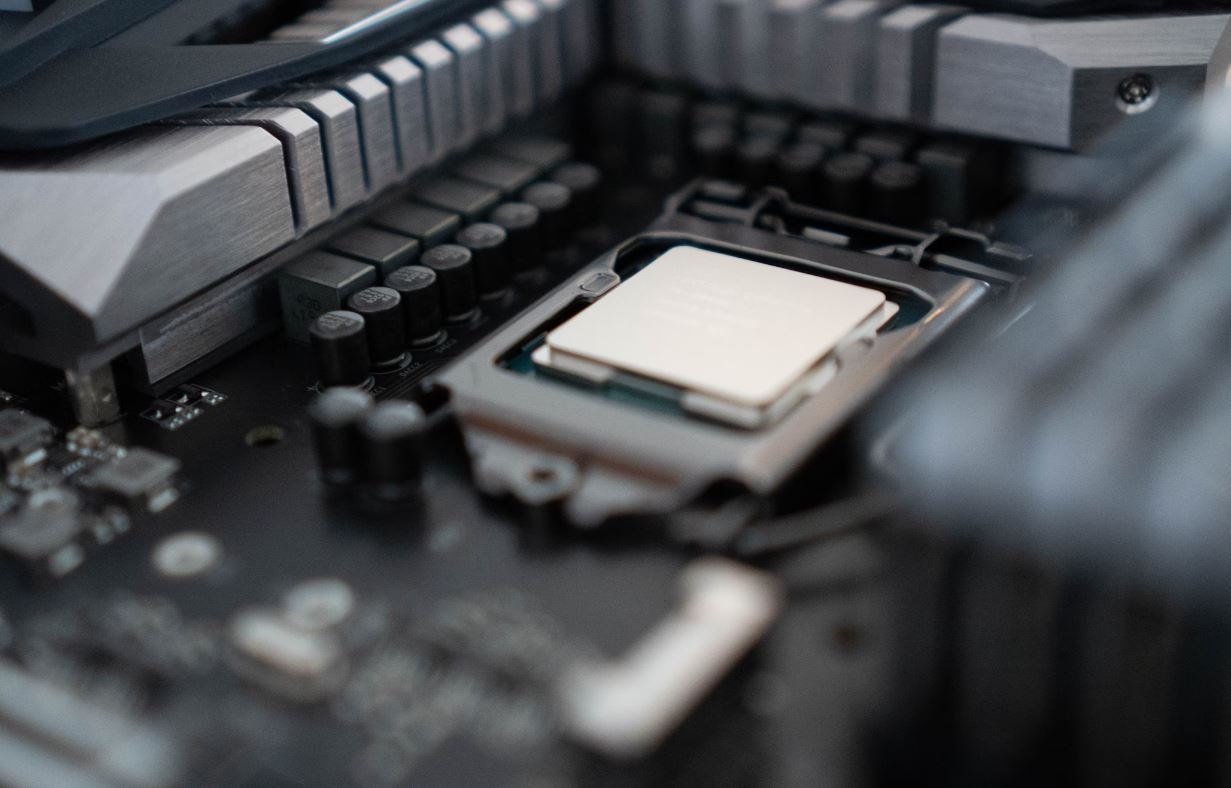AI Applications for Education
Artificial Intelligence (AI) has revolutionized numerous industries, and education is no exception. With its ability to process vast amounts of data, analyze patterns, and perform tasks that traditionally required human intelligence, AI offers numerous applications that can enhance the learning experience. From personalized learning to smart content creation, AI has the potential to transform education in unprecedented ways.
Key Takeaways:
- AI applications in education have the potential to greatly enhance the learning experience.
- Personalized learning, virtual tutors, and smart content creation are some of the key AI applications in education.
- While AI can bring many benefits, it is important to consider ethical considerations and ensure human involvement in the educational process.
Personalized Learning
One of the most promising AI applications in education is personalized learning. AI-powered algorithms can analyze students’ performance and learning patterns to adapt the curriculum and teaching methods to meet their individual needs. This tailored approach allows students to learn at their own pace and focus on areas where they need more help, thereby maximizing their learning outcomes. *AI can be a game-changer in providing customized learning experiences that cater to each student’s unique needs.*
Virtual Tutors
Virtual tutors leveraging AI technology can provide individualized support to students. These intelligent systems can answer students’ questions, provide explanations, and offer guidance throughout their learning journey. Virtual tutors can provide immediate feedback, significantly reducing the time needed for students to grasp new concepts. *Imagine having a tutor available 24/7, patiently guiding you through complex subjects with personalized feedback and explanations.*
Smart Content Creation
AI can also be used to create smart educational content. By analyzing vast amounts of existing educational materials, AI systems can generate high-quality content tailored to specific learning objectives and student needs. This automation of content creation saves time and resources for educators, enabling them to focus on other important aspects of teaching. *AI can turn mountains of data into insightful and engaging educational materials.*
Applications of AI in Education
| Application | Description |
|---|---|
| Intelligent Tutoring Systems | Virtual tutors that offer personalized learning and provide customized feedback. |
| Automated Grading | AI algorithms that can grade assignments and tests, providing quick and accurate feedback. |
| Content Creation | AI systems that can generate educational content tailored to specific learning objectives. |
Ethical Considerations and Human Involvement
While AI applications in education offer significant benefits, it is important to address ethical considerations and maintain human involvement in the educational process. AI should be used as a tool to augment human teachers and enhance their capabilities, rather than replace them. Additionally, considerations around data privacy, algorithm bias, and fairness need to be carefully evaluated and mitigated. *Ensuring ethical AI deployment and striking a balance between technology and human touch is crucial in the field of education.*
Data on AI Adoption in Education
| Statistic | Value |
|---|---|
| Global AI in education market value by 2025 | $6 billion |
| Share of universities adopting AI for student services | 31% |
| Percentage of teachers who believe AI can personalize learning | 87% |
Embracing the Future of Education
The potential of AI in education is vast and promising. By incorporating personalized learning, virtual tutors, and smart content creation, AI has the ability to transform education into a more efficient and engaging process. However, it is crucial to keep ethical considerations in mind and ensure that AI complements human involvement in education. With the right approach, AI can be a valuable tool in unlocking the full potential of students and educators alike.

Common Misconceptions
Misconception 1: AI will replace teachers entirely
One common misconception regarding AI applications for education is that artificial intelligence will completely replace human teachers in the classroom. However, this is not the case. AI can supplement and enhance the role of teachers, but it cannot entirely replace the need for human interaction and personalized instruction.
- AI can provide individualized feedback and personalized learning plans.
- Teachers are essential for fostering social and emotional development in students.
- Human teachers bring unique perspectives and experiences to the learning environment.
Misconception 2: AI will make education less personal
Another misconception is that AI applications in education will make the learning experience impersonal. While AI can automate certain tasks and provide personalized recommendations, it can also enhance the personalization of the learning process. AI can help identify students’ individual strengths and weaknesses, allowing teachers to tailor instruction to meet their specific needs.
- AI can adapt to each student’s learning pace and style.
- Teachers can focus on providing more personalized guidance with the help of AI data.
- AI can facilitate greater collaboration and interaction among students.
Misconception 3: AI is biased and discriminatory
There is a misconception that AI applications for education may be biased and discriminatory, especially in areas such as grading and student evaluations. While it is important to be cautious about potential biases, it is crucial to understand that AI systems are only as unbiased as the data and algorithms they are provided. It is essential to actively address biases and ensure diverse and representative data sets are used in AI applications.
- Ethical guidelines can be implemented to mitigate bias in AI systems.
- Human oversight is necessary to monitor and address potential biases.
- Transparency and accountability are key to preventing discriminatory AI applications.
Misconception 4: AI can replace student effort and engagement
Some people mistakenly believe that AI applications in education can replace the need for students to put in effort and actively engage in their learning. While AI can provide valuable support and resources, it cannot substitute for student motivation and engagement. Students still need to actively participate and make an effort to learn effectively.
- AI tools can enhance student engagement by providing interactive and immersive learning experiences.
- Students still need to actively think, analyze, and apply knowledge, which AI cannot do for them.
- Emphasis should be placed on developing critical thinking, problem-solving, and collaboration skills alongside AI implementations.
Misconception 5: AI cannot adapt to the changing needs of education
There is a misconception that AI applications in education are static and cannot adapt to the changing needs of the education system. In reality, AI systems can continuously learn and evolve based on new data and experiences, allowing them to adapt and improve over time.
- AI can stay updated with new research and educational advancements.
- Feedback from teachers, students, and administrators can be used to refine and improve AI applications.
- AI systems can be flexible enough to accommodate changes in curricula and educational methodologies.

The Rise of AI in Education
Artificial Intelligence (AI) has revolutionized various industries, and education is no exception. AI applications are transforming the ways teachers teach and students learn. From personalized learning experiences to automated grading systems, AI is enhancing the educational landscape. The following tables provide fascinating insights into the diverse applications of AI in education.
Enhanced Learning Experiences
AI is helping to create new and engaging learning experiences for students. It enables adaptive learning platforms, virtual reality simulations, and intelligent tutoring systems. These innovations allow students to learn at their own pace and explore subjects through immersive experiences.
AI-Powered Classroom Assistants
AI-based classroom assistants are augmenting the traditional teaching methods by providing personalized support to students. These assistants can answer questions, provide real-time feedback, and assist with assignments, freeing up valuable time for teachers to focus on individual student needs.
Data-Driven Predictive Analytics
Using AI algorithms, educational institutions can analyze vast amounts of student data to make predictions about their success rates, learning patterns, and academic outcomes. This data-driven approach helps educators identify potential challenges early on and devise appropriate interventions to support students.
Automated Grading Systems
AI-powered grading systems not only expedite the evaluation process but also provide objective and consistent assessments. By utilizing algorithms, these systems can quickly analyze and grade assignments, freeing teachers from routine tasks and allowing them to provide valuable feedback to students.
Intelligent Content Creation
AI can generate dynamically adaptive and personalized educational content. It can create tailored lesson plans, quizzes, and interactive materials based on students’ individual needs and learning styles. This ensures that students receive content relevant to their specific strengths and weaknesses.
Educational Chatbots
Chatbots equipped with AI are transforming the way students access information and receive instant support. These assistants can answer questions, provide study resources, and guide students through complex concepts. Their round-the-clock availability contributes to a more efficient and accessible learning environment.
Identifying Learning Disabilities
AI algorithms can analyze student interactions with educational materials to detect signs of potential learning disabilities. By monitoring patterns, these systems can identify areas where students struggle and alert teachers to provide targeted interventions or accommodations.
Automated Administrative Tasks
AI technology streamlines administrative tasks, such as scheduling, data management, and communication. By automating routine processes, educators and administrators can allocate more time towards meaningful interactions with students and focus on improving the overall educational experience.
Supporting Special Education
AI-based tools are making education more inclusive for students with special needs. These tools can provide speech-to-text translations, visual aids, and personalized learning resources tailored to the individual requirements of students with disabilities.
Integrating AI-centered Curricula
Educational institutions are incorporating AI-focused curricula to prepare students for the future workforce. By equipping students with AI literacy and skills, schools ensure that they are prepared to adapt to the rapidly evolving technological landscape.
In conclusion, AI applications in education have the potential to revolutionize teaching and learning. With enhanced learning experiences, personalized support, data-driven insights, and automation of administrative tasks, AI is empowering educators and optimizing student outcomes. As the field of AI continues to evolve, its impact on education will undoubtedly play a crucial role in shaping the future of learning.
AI Applications for Education – Frequently Asked Questions
What are some AI applications in the field of education?
AI applications in education include personalized learning, intelligent tutoring systems, automated grading, adaptive assessments, and virtual reality simulations, among others.
How does AI facilitate personalized learning?
AI enables personalized learning by analyzing students’ performance data and tailoring educational content and experiences to meet their specific needs and learning styles.
What are intelligent tutoring systems?
Intelligent tutoring systems are AI-driven platforms that provide individualized guidance and support to students, simulating a personalized tutor-student interaction.
How can AI be used for automated grading?
AI can automate the grading process by analyzing answers or essays using natural language processing algorithms and predefined criteria, increasing efficiency and reducing manual effort.
What are adaptive assessments?
Adaptive assessments use AI algorithms to dynamically adjust the difficulty and content of questions based on the student’s responses, providing a more accurate evaluation of their knowledge and skills.
How can AI enhance virtual reality simulations in education?
AI can improve virtual reality simulations by incorporating intelligent agents that can provide realistic scenarios, feedback, and guidance to enhance the learning experience in virtual environments.
What are some potential challenges or concerns with AI applications in education?
Challenges include data privacy, bias in algorithms, dependency on technology, possible job displacement, and the ethical responsibility of AI systems in shaping educational experiences.
Are there any limitations to using AI in education?
Some limitations of AI in education include the need for high-quality data, potential lack of human interaction, difficulty adapting to every student’s unique learning style, and the cost of implementing AI systems.
How can AI be ethically applied in education?
AI in education should prioritize fairness, transparency, and inclusivity. It should be used as a tool to enhance human teaching and learning, respecting privacy and providing equal opportunities for all students.
What is the future of AI in education?
The future of AI in education holds potential for further advancements in personalized learning, intelligent tutoring systems, data-driven insights, and the integration of AI technologies with traditional teaching practices.





